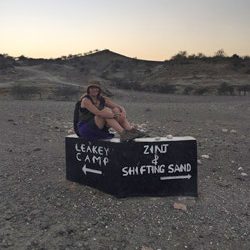The Zooarchaeology Laboratory is used for teaching the analysis of faunal remains in an archaeological context. In addition, the lab is used for the analysis of zooarchaeological material and houses a large comparative collection comprised of North American and African faunal material.
Equipment & Software
- 2 imac computers equipped with photographic software
- 2 P.C.’s equipped with photographic software and ArcGIS
- Nikon d7100 SLR camera and lenses
- Leica TS-11 total station
- Kaiser photostand
Collections
Comparative collection of modern faunal material from North America and Africa
Publications
Pante, M.C., Torre, de la I. (2018). A hidden treasure of the Lower Pleistocene: the Leakey HWK EE assemblage. Journal of Human Evolution 120, 114-139. (Impact factor 4.5, citations 6)
Pante, M.C., Njau, J.K., Hensley-Marschand, B., Keevil, T., Martín-Ramos, C., Peters, R. Torre, I. de la. (2018). The carnivorous feeding behavior of early Homo at HWK EE Bed II, Olduvai Gorge, Tanzania. Journal of Human Evolution 120, 215-235. (Impact factor 4.5, citations 8)
Pante, M.C., Muttart, M., Keevil, T., Blumenschine, R.J., Njau, J.K., Merritt, S.M. (2017). A new high-resolution 3-D quantitative method for identifying bone surface modifications with implications for the Early Stone Age archaeological record. Journal of Human Evolution 102, 1-11. (Impact factor 4.5, citations 19)
Braun, D., Pante, M.C., Acher, W. (2016). Cut marks on bone surfaces: Influences on variation in the form of traces of ancient behavior. Royal Societies Interface focus 6(2), 2016.0006. (Impact factor 2.6, citations 11)
Pante, M. C., Scott, R. S., Blumenschine, R. J., Capaldo, S. D. (2015). Revalidation of bone surface modification models for inferring fossil hominin and carnivore feeding interactions. Quaternary International 355(12), 164-168. (Impact factor 2.5, citations 22)
Pante, M. C. (2013). The larger mammal fossil assemblage from JK2, Bed III, Olduvai Gorge, Tanzania: Implications for the feeding behavior of Homo erectus. Journal of Human Evolution 64(1), 68-82. (Impact factor 4.5, citations 15)


